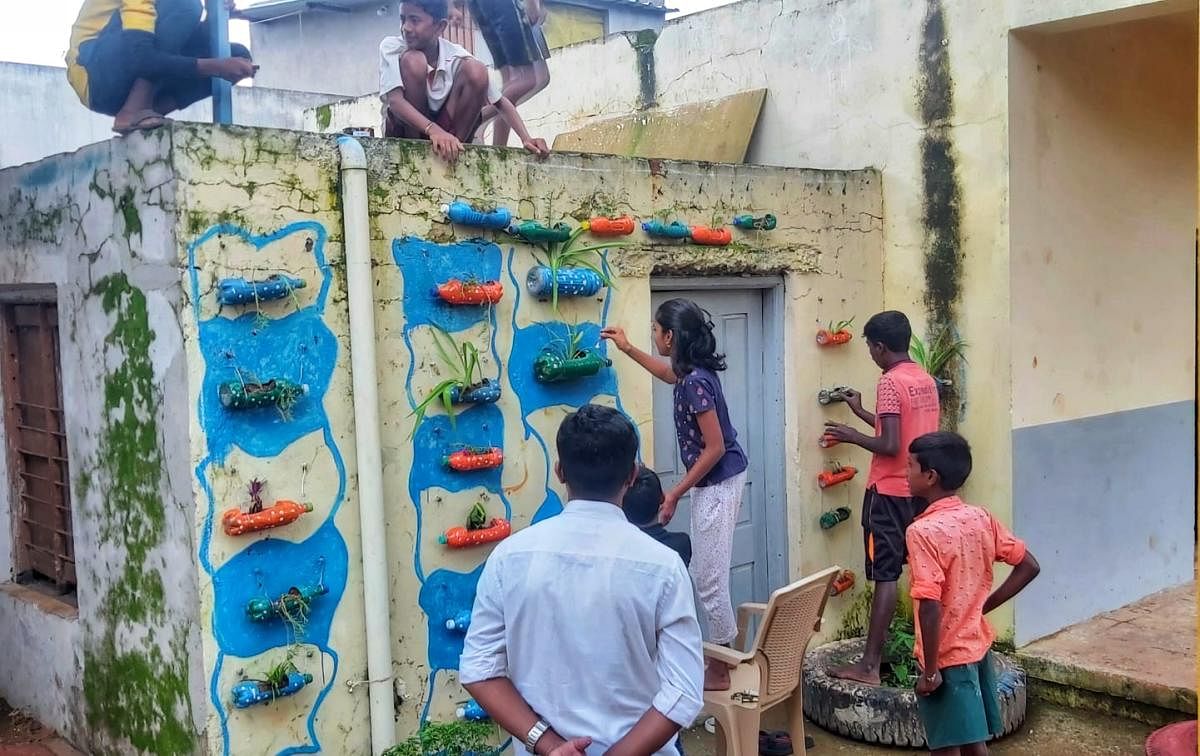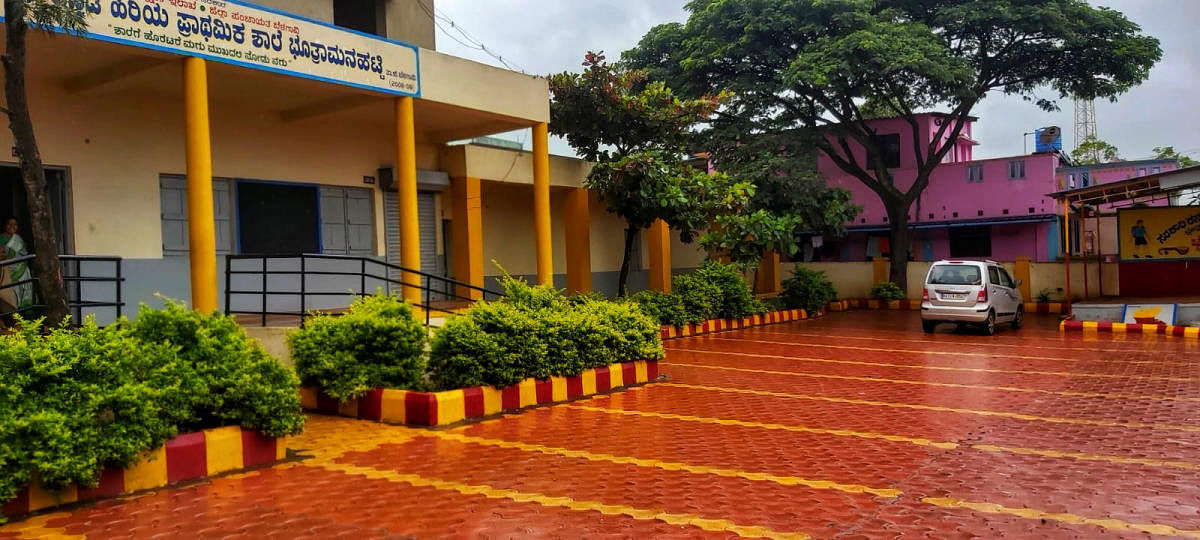

With a library of 6,000 books, a well-equipped science laboratory, a computer lab, a neat playground, smart, colourful classrooms, modern toilets and enthusiastic teachers, the government model higher primary school at Bhutaramanahatti near Belagavi city stands out in the region. In fact, it even attracts students from nearby private schools.
Walk into the school’s ‘Paramanu’ science lab and one finds 20 working models on Newton’s laws, solar power generation, and electricity generation and other concepts of science.
Apart from this, there are samples of various types of soil, RNA/DNA helix models, biological specimens, microscopes, and equipment needed for chemistry experiments. The walls are adorned with photographs of scientists and charts explaining concepts like the evolution of man, food chain, solar system, and dispersion of light through a prism.
Students are also free to walk into the lab whenever they find something interesting in their school garden or want to experiment with something.
Older students maintain the lab and teach their juniors how to use the facilities before leaving the school.
“I love exploring nature and understanding it through our lab. We were elated when we peeped into the microscope and saw bacteria for the first time. Whenever we have some new idea, we share it with our teacher who then helps us to conduct experiments,” said Chandan Chougla, a Class 8 student.
This was not the case a few years ago.
Then, the school had few classrooms and minimal facilities. But things began to change when Basavaraj Sungari, a young science teacher, joined the school.
Having studied in a government school himself, he believed that government-run schools did not lack talent. They just needed the right facilities.
Small start
He started small, beginning weekly activities like Shataadhipathi, modelled on the lines of the TV show Kaun Banega Crorepati. With the principal as the sponsor, students were awarded Rs 10 for each question they answered and had a chance to win Rs 100 if they answered all 10 questions.
Other activities like making science models using waste materials followed. He even created a WhatsApp group of school parents, teachers and students and began posting interesting study material there.
Impressed with the enthusiasm of the teachers, some donors came forward and began the process of improving the infrastructure.
Even the science lab was fully funded by individuals, and supported by the BEO and DDPI.
Exploring technology at the primary school level, Sungari also used some 3D educational apps related to augmented reality and created videos that he projected with the help of a mobile phone. That helped students visualise various scientific concepts.
In one such video, Sungari stands amidst a virtual solar system while in another, he stands beside an elephant and other animals, explaining their physical features, habitat, and other interesting facts.
“It took a lot of time to shoot live videos using augmented/virtual reality but I wanted to ensure that students keep adding to their knowledge. I did not stick to just textbooks but made sure that students had knowledge which would help them in future,” said Basavaraj who later made videos on the digestive system, heart, and other scientific concepts.
With the reopening of the school recently, the teachers have also developed a mathematics and social science lab at a cost of Rs 11 lakh, which will be formally inaugurated soon.
The math lab has models that help students learn fractions, Vedic maths, triangles and angles, formulae, algebraic formulae, and other concepts.
The school also has a hanging pipe garden developed by the students themselves.
“We had a few unused bottles and pipes at the school. With the help of teachers, we planted saplings in those bottles, pipes, and boxes. Now, we have a beautiful garden at school,” said Aishwarya Benni, another student.
“We do not need only government help to develop schools. All we need is creative minds and people who genuinely want to bring about change,” said the principal Bharathi.
She added that teachers from other educational institutions have become regular visitors to their school and in this way they have been inspiring other schools as well.